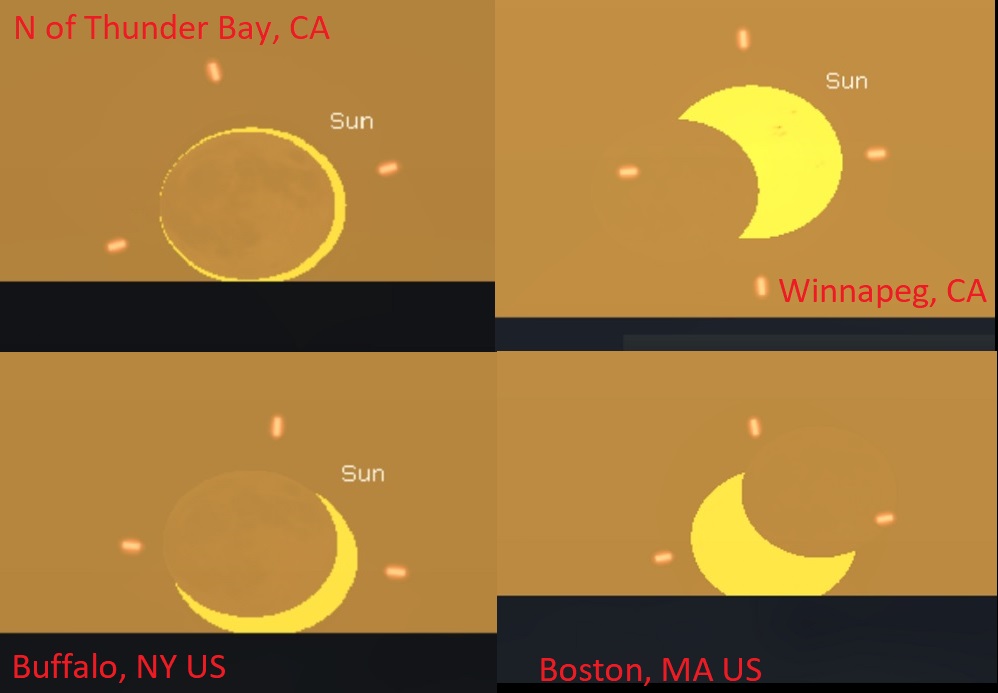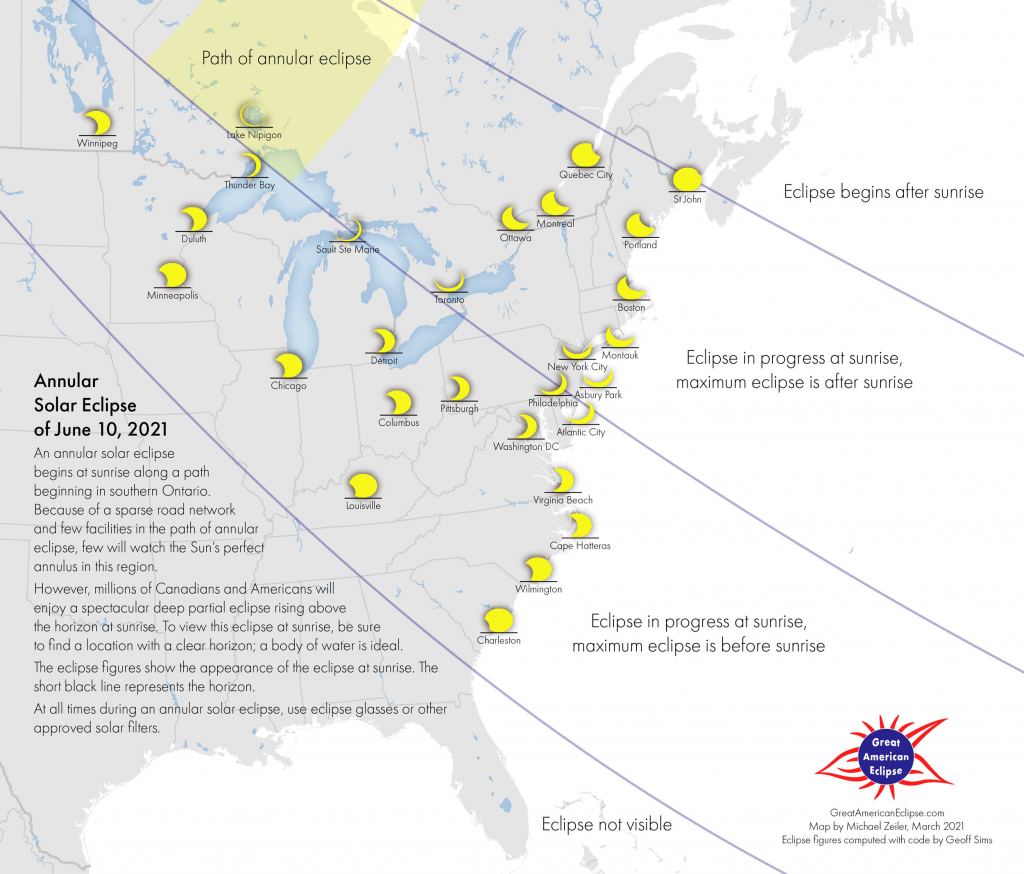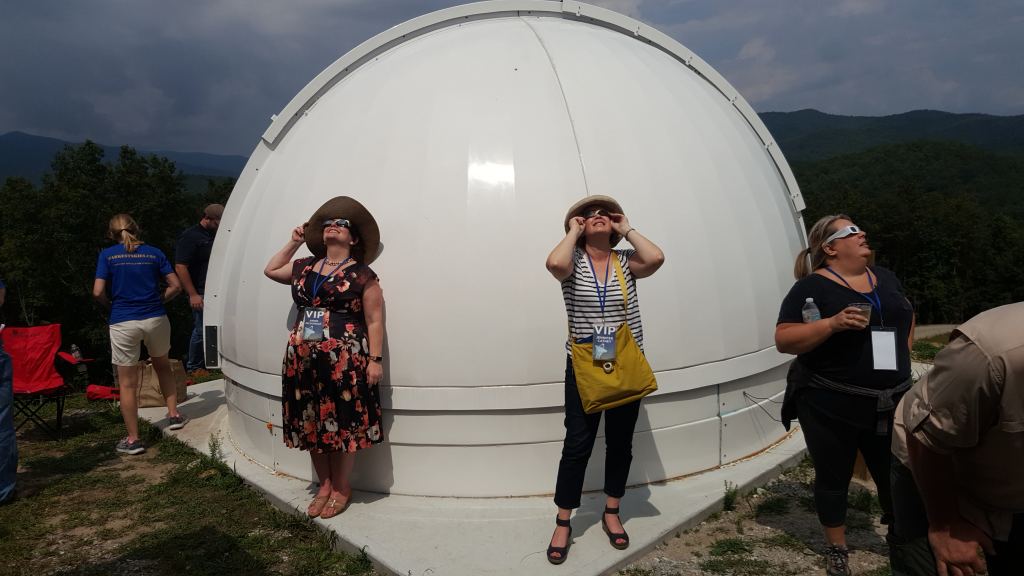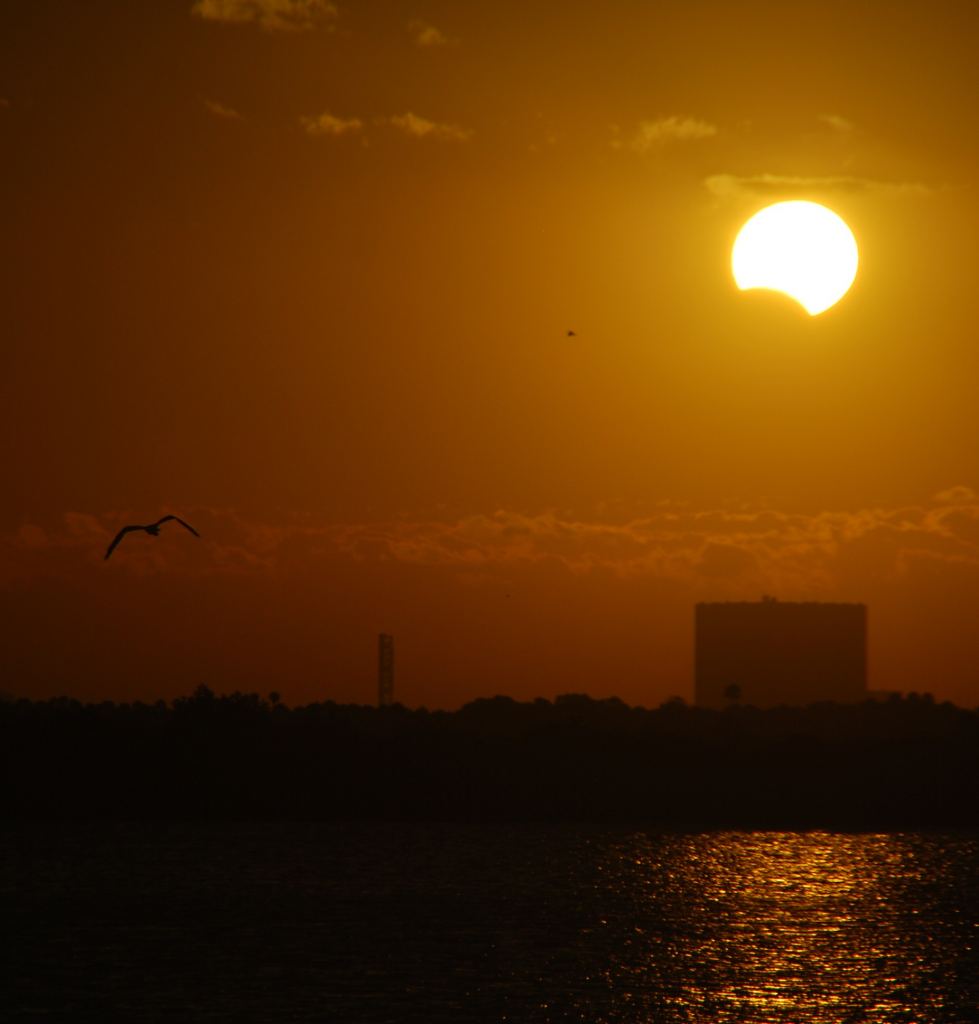Solar Horns at Sunrise: Our Guide to the June 10th Annular Solar Eclipse
By David Dickinson
The only annular eclipse of 2021 will produce a fine spectacle across most of North America and Europe.
Got those solar glasses handy from 2017? If skies are clear on the morning of Thursday June 10th, you may once again find good use for them, as an annular ‘ring-of-fire’ eclipse crosses northeastern Canada into the Arctic.
Annular eclipses occur when the Moon is visually too tiny to completely cover the Sun. You can see how circumstances are stacking up in favor of an annular versus a total solar eclipse in early June, as the Earth reaches aphelion (its farthest point from the Sun) just a few weeks later on July 5th, while the Moon reaches apogee on June 8th, just 46 hours prior to the eclipse. On June 10th, the Moon appears 29’ 34” across, versus the Sun’s 31’ 30” diameter.

The annular shadow of the Moon is the central cone where the ring of fire can be seen. This is known as the antumbra of the Moon.
And while the folks often tout the ‘perfection’ of total solar eclipses as seen from the Earth, in the current epoch, annulars are actually more common, and will become increasingly more so. This is because the Moon is slowly moving away from us, currently to the tune of about 3.8 centimeters per year. About 900 million years ago, the very first annular eclipse occurred, and 1.4 billion years from now the last total solar eclipse will grace the Earth, after which, all central solar eclipses will be annular.

Now, for the bad news: the path for annularity of this eclipse is a bashful one, passing over remote regions of the Canadian province of Ontario, Hudson Bay, northern Quebec and Northwestern Greenland before crossing the North Pole and ending at dusk on the Arctic shores of Siberia. Overall, the central path is pretty sparsely populated, though the military stations of Alert, Canada and Thule Air Base in Greenland are in the path. Another factor clipping the wings of many an eclipse tourist is the fact that, as of writing this, the U.S.-Canada border is still closed due to the ongoing pandemic at least until June 21st.

Viewing region and prospects – The good news is, millions across the northeastern half of North America, nearly all of Europe and Russia will see various stages of a partial solar eclipse. For the contiguous United States (CONUS), the line to catch a partial eclipse at sunrise runs through the Dakotas right down to Georgia… but the ‘sweet spot’ for a particularly photogenic ‘sunrise horns’ eclipse runs through the Great Lakes, right down through the New Jersey-Pennsylvania/Delaware tri-state region.

Solar safety – Unlike a total solar eclipse, where it’s ‘glasses off’ during totality, you need to treat an all stages of an annular eclipse like a partial eclipse, and observe safety precautions throughout: we caught the May 10th, 1994 annular eclipse from the shores of Lake Erie, and can attest that 1% of the Sun is still pretty darned bright. Inspect those filters and eclipse glasses for cracks and pinholes prior to use, and only use glasses with the approved ISO 12312-2 rating stamped on them. NASA has an extended page on solar observing safety here.

Observing – If you have a telescope, you can safely observe the eclipse by projecting the Sun’s image on a board or sheet of paper, or build a sun funnel to rear-view project the disk of the Sun on to a screen. Be sure to give the telescope cool down time every minute or so to avoid overheating, which can scorch optical coatings, melt plastic parts, and cause expensive optical elements to come unglued. Another easy method to observe a partial solar eclipse is to build what’s known as a pinhole projector.
If you’re lucky enough to have a 90% or deeper eclipse and clear skies, you may notice that the sky takes on a deep-steely blue tint at mid-eclipse… but would you notice that an eclipse is underway, if you didn’t know any better? As a clue, check out the shadows cast by tree leaves or lattice-work, and you may nice tiny bright ‘crescent suns’ littering the ground, serving as nature’s pinhole projectors.

Imaging – The rising horns of the Sun will offer the chance to nab the eclipse with terrestial objects in the foreground. To capture this scene, you’ll want a DSLR with at least a 200mm zoom lens, and a variable neutral density filter, the darker the better. Start with a low (100) ISO, and a fast (at least 1/1000 second) shutter speed. Physically cover the camera’s view finder to avoid looking through it at the Sun, and only use the digital display for aiming and framing the eclipse.

Tales of the saros – This particular eclipse is part of solar saros 147, member 23 of 80. This saros started way back on October 12th 1624, and will end on February 24th, 3029 AD. Maximum annularity for this eclipse is 3 minutes and 51 seconds in duration, and occurs over the northern tip of Greenland.
Views online – Clouded out, or simply live on the wrong side of the planet? The good people at the Virtual Telescope Project have got you covered, with a live broadcast of the annular eclipse starting on June 10th (TBA).
Finally, watch for views of the eclipse from space. In the past, we’ve seen captures of the Moon’s shadow crossing the Earth courtesy of GOES weather sats, NASA’s Earth observing Deep Space Climate Observatory (DSCOVR) mission, and brief partial eclipses courtesy of ESA’s Proba-2 and JAXA’s Hinode solar mission. Astronauts aboard the ISS have also caught the celestial spectacle on occasion.

Next eclipses – and of course, the question on everyone’s mind is: when’s the next one? Well, while we do have a total solar eclipse later this year on December 4th, it’s another timid one, spanning the Antarctic… the next decent annular for the Americas occurs on October 14th, 2023.
Don’t miss next Thursday’s eclipse, either online or in person. Follow us (we’re @Astroguyz on Twitter) for updates on solar activity and weather leading up to the eclipse, action during (we’re hoping to catch the eclipse from the top on Haystack Mountain in Northern Maine at sunrise) and the best pictures we see, post eclipse.
Lead image credit: A rising annular ‘ring of fire’ eclipse from 2012. Image credit: Kevin Baird.
The post Solar Horns at Sunrise: Our Guide to the June 10th Annular Solar Eclipse appeared first on Universe Today.

June 3, 2021 at 06:01PM
via Universe Today read more...

Post a Comment